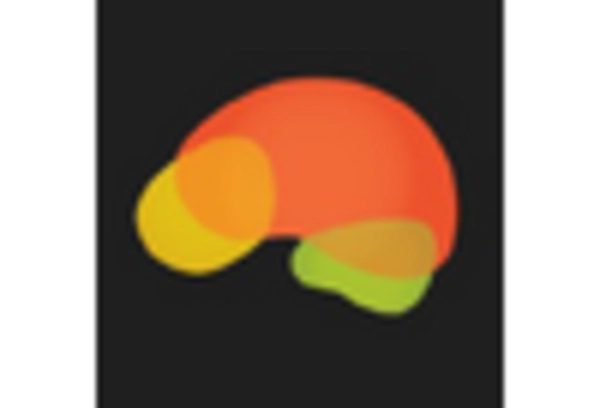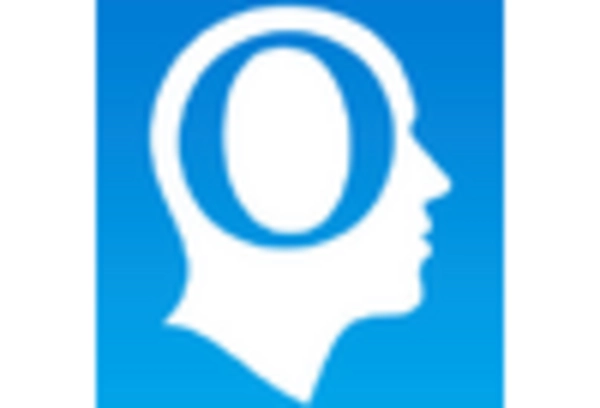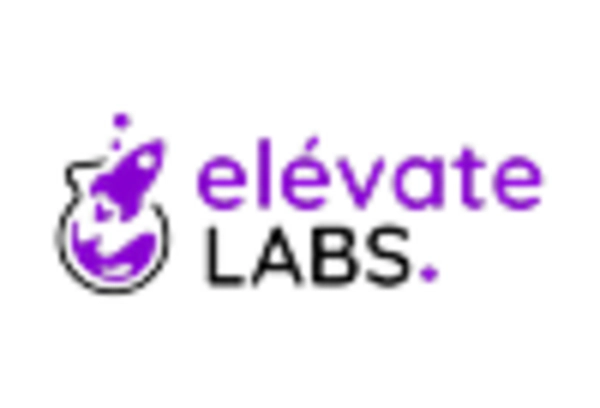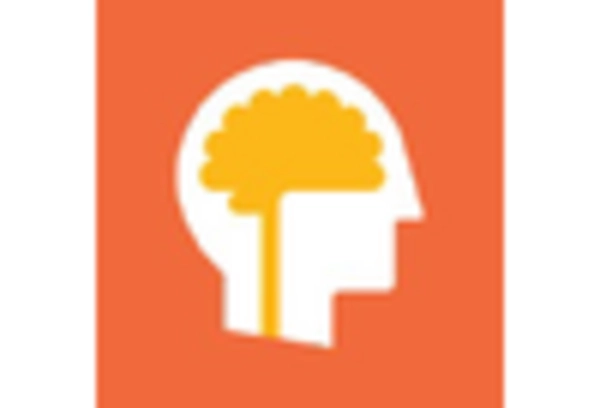Rising Demand for Cognitive Enhancement
The increasing awareness of cognitive health has led to a rising demand for brain training software. Individuals are increasingly seeking tools that can enhance memory, attention, and problem-solving skills. This trend is particularly evident among older adults who are keen on maintaining cognitive function as they age. The Brain Training Software Market is projected to grow as more consumers recognize the benefits of mental exercises. According to recent estimates, the market is expected to reach a valuation of approximately 5 billion dollars by 2026, driven by this heightened interest in cognitive enhancement. As a result, companies are focusing on developing innovative solutions that cater to this growing demographic, thereby expanding their market reach.
Increased Focus on Mental Health and Wellness
The growing emphasis on mental health and wellness has significantly influenced the Brain Training Software Market. As society becomes more aware of the importance of mental well-being, individuals are actively seeking tools that can support their cognitive health. This shift in focus has led to an increase in the adoption of brain training software as a preventive measure against cognitive decline. Market data indicates that the wellness sector is expanding rapidly, with brain training software being a key component of this growth. Companies are responding by developing programs that not only enhance cognitive skills but also promote overall mental wellness, thereby tapping into a lucrative market segment.
Growing Popularity of Remote Learning Solutions
The rise of remote learning solutions has created new opportunities for the Brain Training Software Market. As more individuals engage in online education, there is a corresponding demand for tools that can enhance cognitive skills in a virtual environment. Brain training software is increasingly being utilized as a supplementary resource for remote learners, helping them to stay mentally sharp and engaged. Market analysis indicates that the shift towards online learning is likely to persist, thereby sustaining the demand for brain training applications. Companies that adapt their offerings to cater to this trend may find themselves well-positioned to capture a larger share of the Brain Training Software Market.
Technological Advancements in Software Development
Technological advancements play a crucial role in the evolution of the Brain Training Software Market. The integration of artificial intelligence and machine learning algorithms allows for more personalized training experiences. These technologies enable software to adapt to individual user needs, providing tailored exercises that can optimize cognitive training. Furthermore, advancements in user interface design enhance user engagement, making the software more appealing to a broader audience. As technology continues to evolve, the market is likely to witness an influx of sophisticated applications that offer enhanced functionalities. This trend suggests that companies investing in cutting-edge technology may gain a competitive edge in the Brain Training Software Market.
Expansion of Educational Institutions Utilizing Brain Training Software
Educational institutions are increasingly incorporating brain training software into their curricula, recognizing its potential to enhance learning outcomes. The Brain Training Software Market is benefiting from this trend as schools and universities adopt these tools to improve students' cognitive abilities. Research suggests that students who engage with brain training programs demonstrate improved focus, memory retention, and problem-solving skills. This integration into educational settings is likely to drive demand for brain training software, as institutions seek to provide comprehensive learning experiences. As more educational bodies recognize the value of cognitive training, the market is expected to expand, creating opportunities for software developers to collaborate with schools and universities.


















Leave a Comment